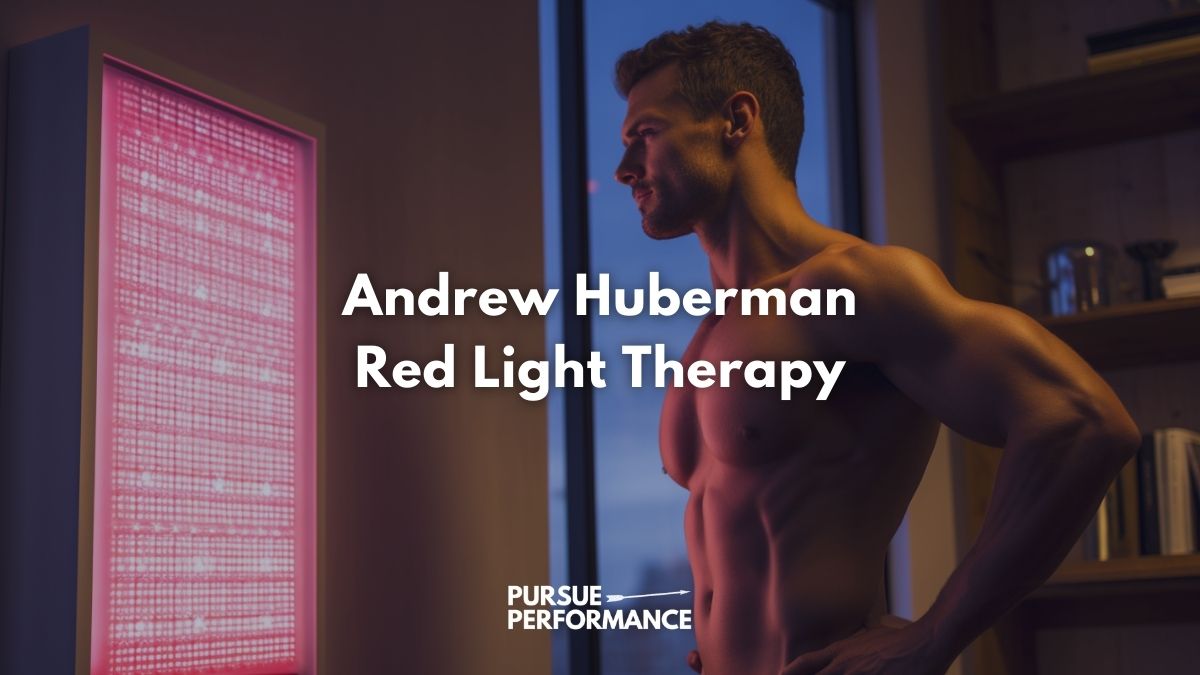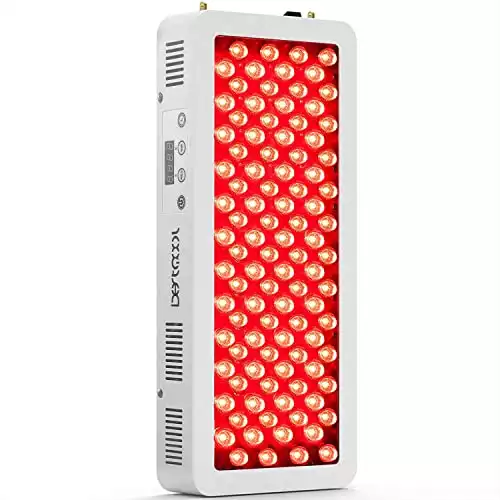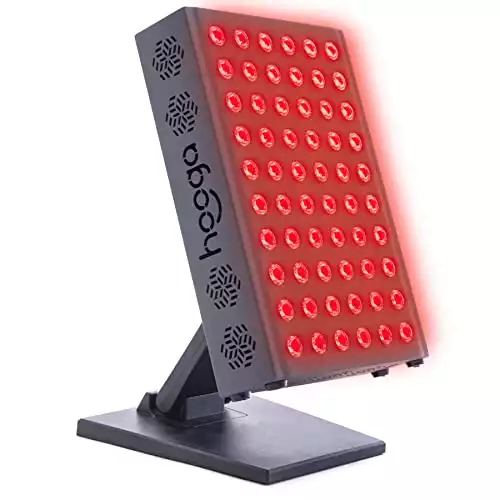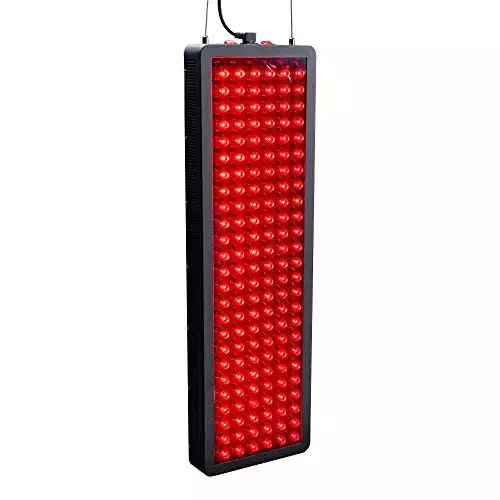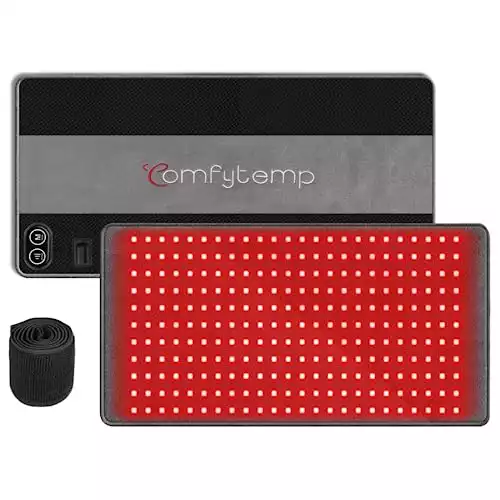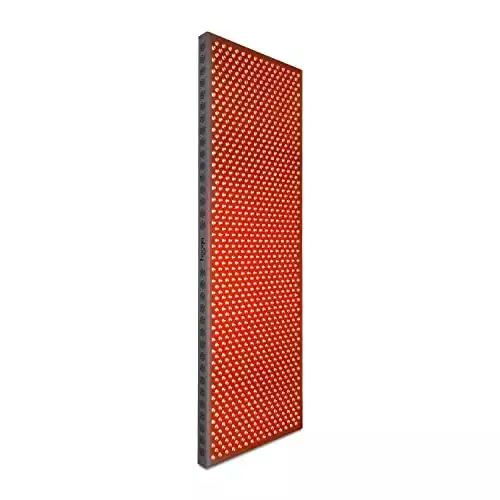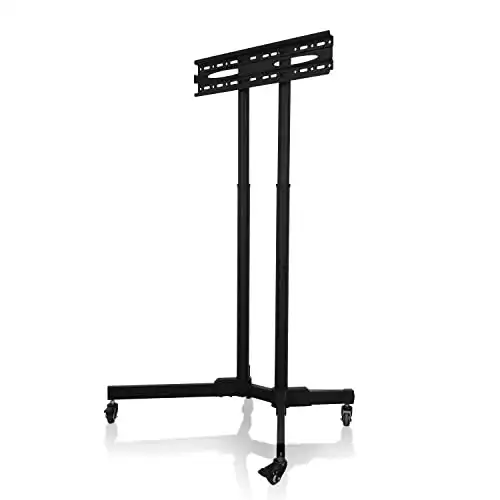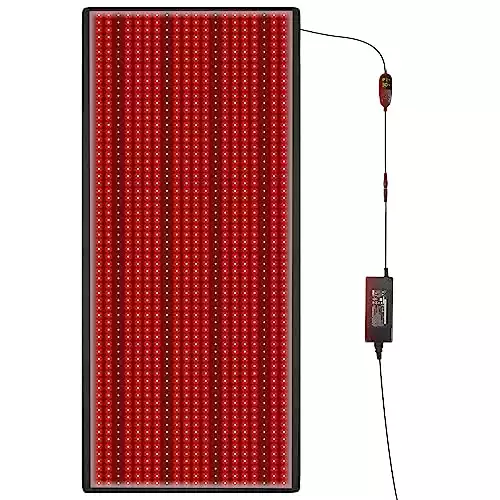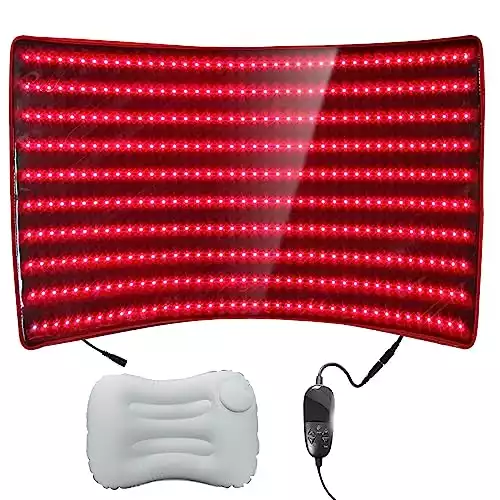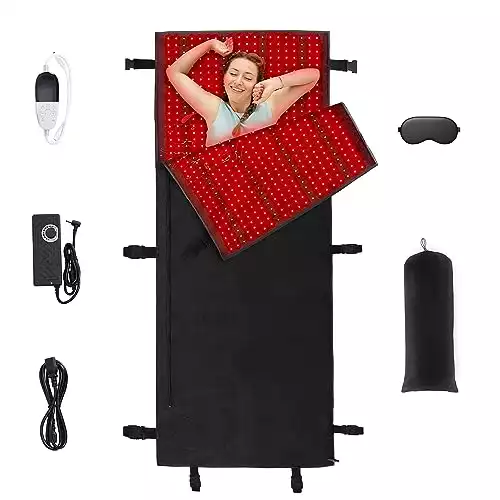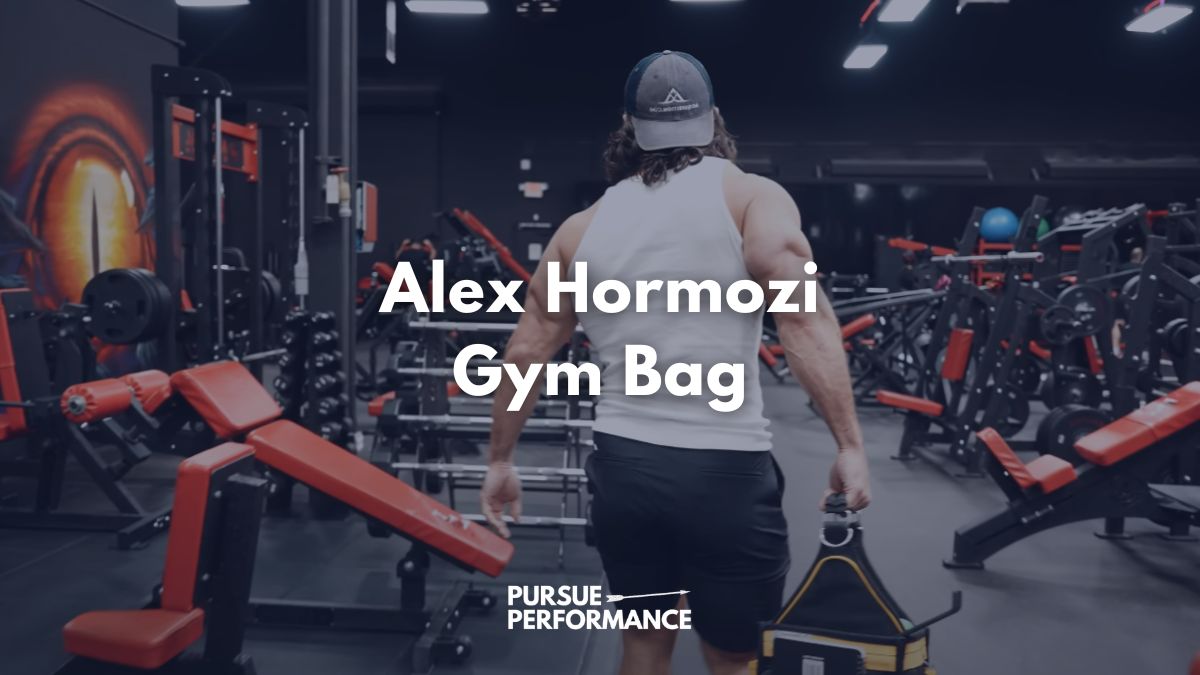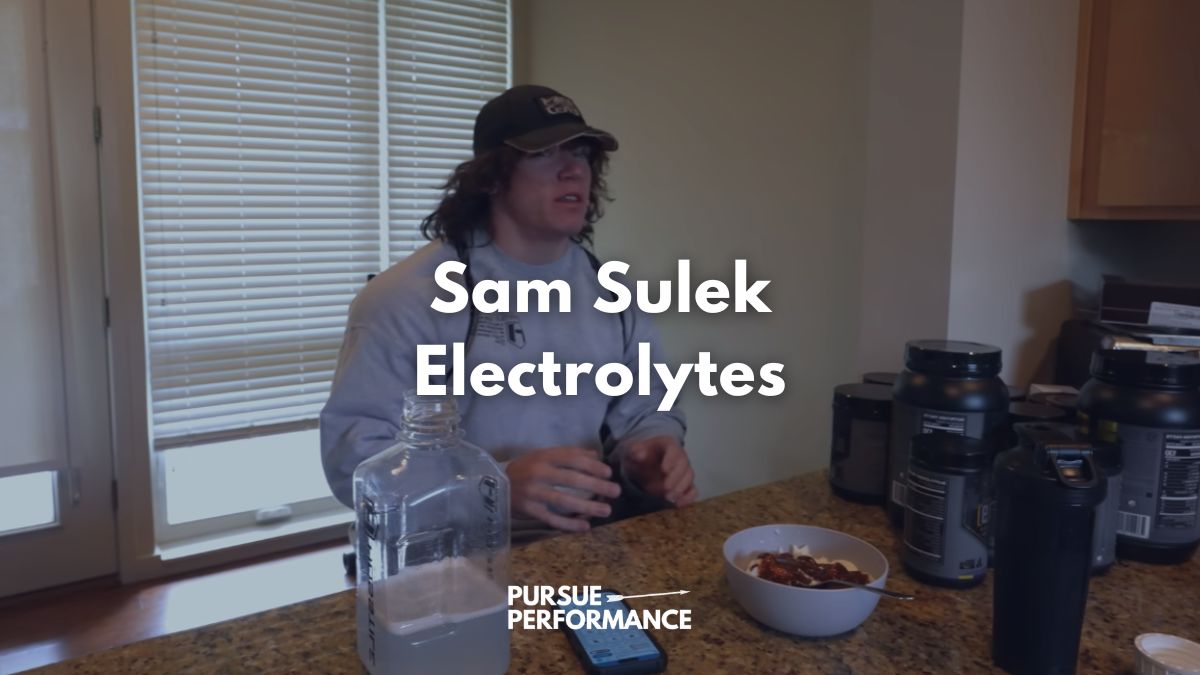According to Professor Andrew Huberman, red light therapy is a science-backed protocol to potentially improve visual function in adults, aid in wound recovery, and support healthier skin.
Huberman personally uses red light therapy, and there are limited reported downsides and risks associated with the protocol.
In this post, we will share Professor Huberman’s explanation of the science behind red light therapy, studies that Huberman has cited, and his recommendations for red light therapy devices.
Let’s get into it!
Recommendations
Best Starter: Hooga Red Light Panel
Best Value: Bestqool Red Light Panel
Best Mat: LOVTRAVEL Red Light Mat
Best Large Panel: Hooga, 300 LED Panel
Best Full Body Panel: Hooga, 1080 LED Panel
Huberman Red Light Therapy Science
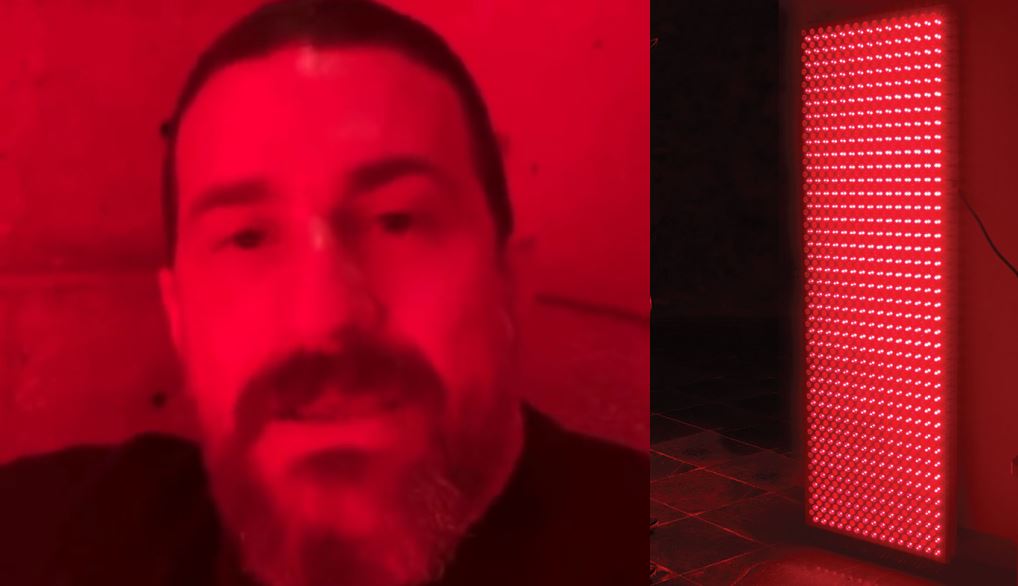
Red light is a fascinating and rapidly growing area of study.
It’s often discussed in terms of its impact on mitochondria.
Huberman mentions that there is evidence from Glenn Jeffery’s lab at University College London showing that red light stimulation to the eyes in people 40 or older can offset some of the effects of macular degeneration by improving the health of the photoreceptors.
The idea behind red light therapy is that it may have local effects, but systemic red light therapy, like getting very bright light, may approximate the effects of nature.
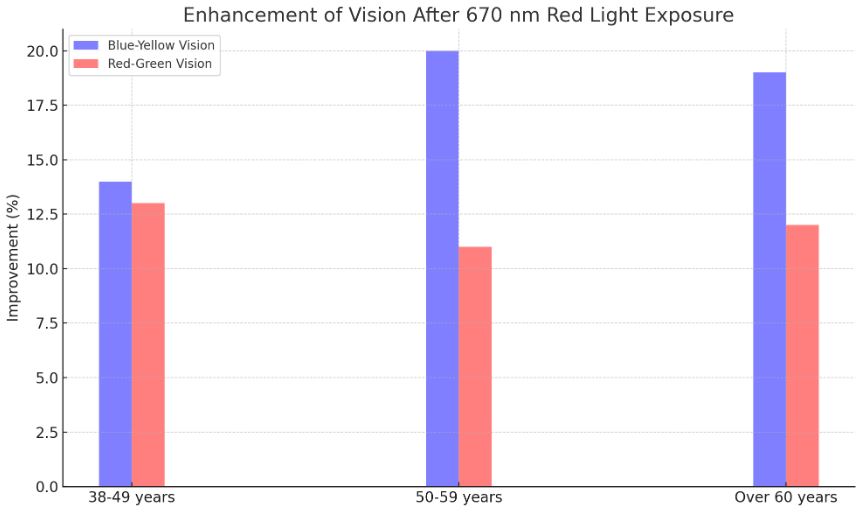
When you’re in the sun, many red wavelengths are coming toward you.
Related: Bryan Johnson Red Light Therapy: Recommendations and Benefits
So, red light therapies may have some utility, but getting sunlight is another great way to get exposure to these valuable light wavelengths.
Huberman notes that this field hasn’t progressed far enough to make any firm conclusions.
However, it’s being explored for conditions like fibromyalgia, which consists of whole-body pain, with some thought red light might be a beneficial treatment.
Related: Best Red Light Therapy Bed
Red Light Therapy Studies
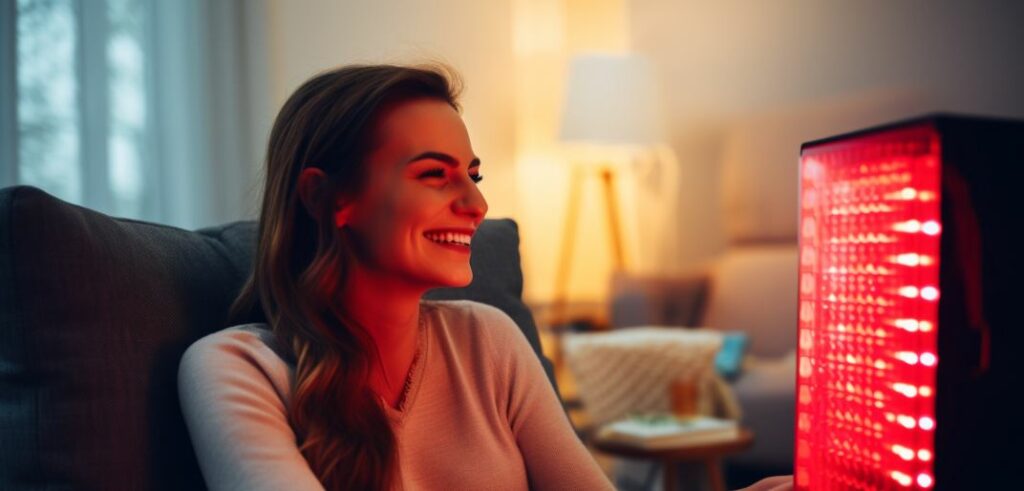
Huberman has referenced numerous peer-reviewed studies on red light therapy’s health benefits.
Related: Best Red Light Blankets
Healing and Restoring Skin
This literature review examined red and near-infrared light to stimulate healing and rejuvenate skin.
This type of light therapy appears promising for treating many skin conditions, especially those requiring faster healing, less inflammation, and improved appearance.
For example, it has been used to help vitiligo by repigmenting white patches while also being able to lighten unwanted dark spots in some cases.
The optimal light color – red, near-infrared, or both – likely depends on the skin condition being treated.
While results seem positive so far, more research is still needed to fine-tune treatment approaches and better understand how this light interacts with skin cells.
Related: Andrew Huberman on Grounding: Everything You Need to Know
Promoting Wakefulness
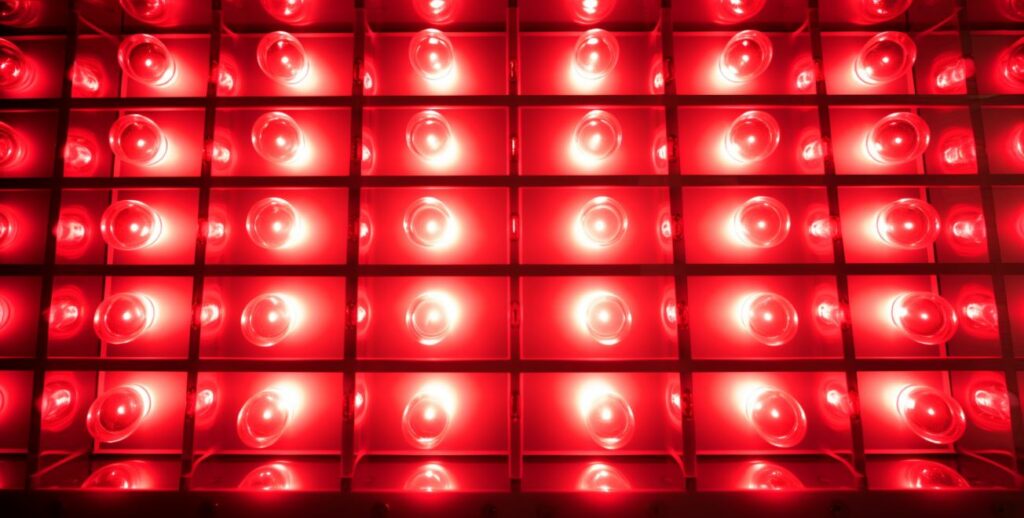
This ongoing field study tests whether red light delivered through personal glasses can help day and night shift workers while on the job.
Participants tried three types of light intervention to the eyes: red light, blue light, and dim white light.
During each light exposure, workers did visual tests, gave saliva samples to measure melatonin and cortisol, and reported on sleepiness, sleep problems, and health over 20 weeks.
So far, results show response times improved with red light.
In summary, early results partially match lab studies showing red light at night may promote alertness and certain types of performance while having limited negative effects on sleep quality.
Related: Andrew Huberman Magnesium Threonate
Huberman Red Light Therapy Recommendation
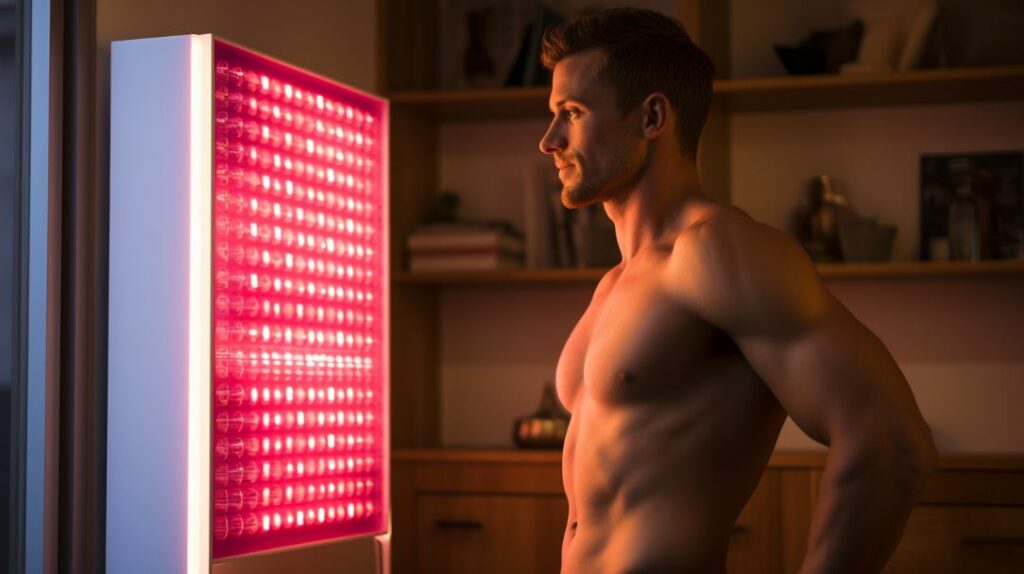
Huberman has mentioned using a red light therapy panel at home.
These devices can range anywhere from $100 for a smaller, less-powerful unit all the way to thousands of dollars for professional-grade solutions.
Below is a red light panel that most closely matches Huberman’s description from the Huberman Lab podcast.
- High-powered unit, comparable with expensive brands
- Option to choose red light, infrared light, or both
- Integrated digital timer
Additionally, Huberman has mentioned two specific red light therapy brands during his podcast episode with Dr. Rhonda Patrick.
Huberman stressed that he has no affiliation but that Joovv and KOZE “seem excellent.”
We personally investigated these brands and found them to be high-quality.
However, it was difficult to justify the price compared to similar products that are offered more directly from manufacturers.
If you are particularly interested in getting red light on as much of your skin as possible, check out these options below at varying price points.
- Adjustable stand
- US-based company
- 3 year warranty
- Wide red light coverage area
- Positive user experiences with injury relief
- Smaller size to target specific areas (joints, back, etc)
- Portable and easy to travel with
- 630nm, 660nm, and 850nm wavelenghts
- Highest clinical grade quality
- Option to add a stand for full-body coverage
- Industry-leading 3 year warranty
- Covers entire side of body (front/back)
- 3,840 medical red and 768 infrared lights
- Protective plastic layer for easy cleaning
- Unique, mid-sized form factors targets large parts of body
- Good value for those who don't want a full mat/bed
- Includes 660nm and 850nm wavelengths
- Convenient, full-body coverage for shorter sessions
- Unique, two-panel design
- 2,500+ high-powered red and infrared lights
Related: Andrew Huberman Pre-Workout Recommendations
FAQ
What does Huberman say about red light therapy?
Huberman says red light therapy may offer benefits such as improving visual functions in older adults.
He personally uses a red light therapy panel at home and has referenced potential benefits around physical recovery and skin health.
What light does Huberman recommend?
Huberman does not recommend a specific light, but he has said he uses a red light therapy panel in the 600-1000nm wavelength range, including both red and infrared light.
What light pad does Huberman use?
It’s unspecified which brand of light pad Huberman personally uses. On his podcast with Dr. Rhona Patrick, he mentioned both Joovv and KOZE “seem excellent.”
What does red light therapy do for you?
Potential benefits include wound healing, pain relief, enhanced skin health, anti-inflammatory effects, and increased cellular energy.
Is there any downside to red light therapy?
If overdone, side effects like headache or eye strain can occur. It’s also possible for skin redness or sensitivity to occur after longer sessions.
Who should not use red light therapy?
Those with light-sensitive conditions or on photosensitive medications should avoid red light therapy before consulting a doctor.
Does red light lower cortisol?
Some research suggests that exposure to red light does not increase cortisol as much as blue light and other wavelengths.
Is it better to use red light therapy in the morning or at night?
Morning exposure can be helpful in promoting wakefulness and energy, while anecdotally, some users have reported that nighttime use helps with sleep.

